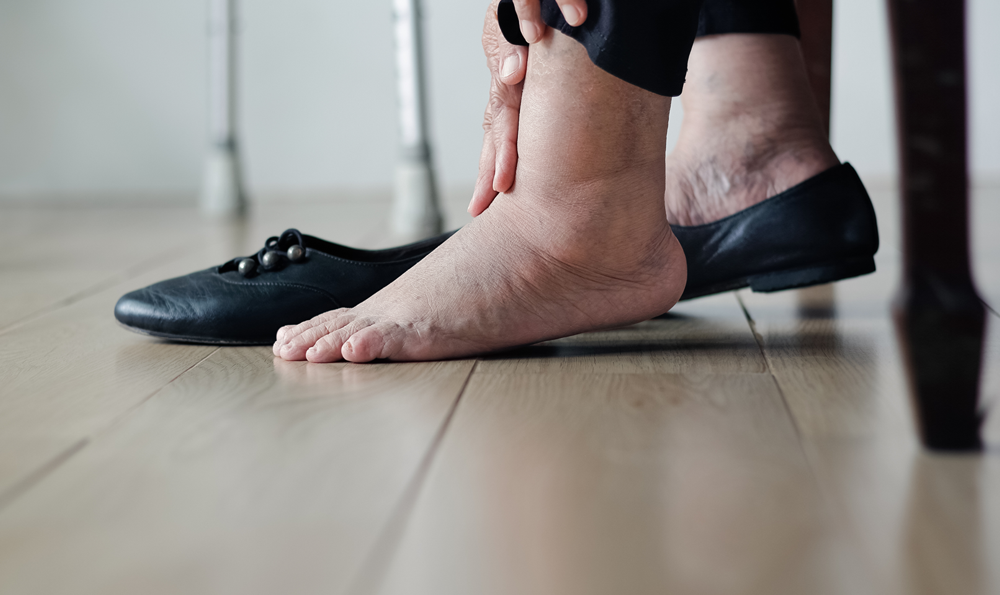If you have swollen ankles, varicose veins, or achy, heavy legs, it may be a circulation problem known as venous insufficiency.
Venous insufficiency occurs when the valves in the veins in the legs become weak or damaged, making it difficult for the veins to push blood from the legs back to the heart. When blood pools in the lower legs, ankles, and feet, it can cause swelling, heaviness, and discomfort.
“Leg swelling is one of the most common complaints I hear from my patients,” says Scott Sundick, MD, chief of Vascular Surgery at Atlantic Health’s Overlook Medical Center. “Under normal circumstances, blood returns to the heart through muscle contractions in the legs that push the blood up through the vein and valves, preventing the blood from flow back toward the feet.”
Signs and symptoms of poor circulation
According to Dr. Sundick, venous insufficiency is common among older adults. For most, it can be managed with a few simple lifestyle changes or with a minor outpatient procedure. Here are some of the warning signs:
- Swelling in the lower legs or ankles
- Aching, tired, or heavy legs
- Twisted or enlarged varicose veins
- Browning and thickening of the skin on legs
- Ulcers on the legs or ankles
- Cramping and chronic leg pain
- Itching or tingling
What are the causes of venous insufficiency?
Poor circulation can develop from underlying health conditions or lifestyle factors that impair blood flow in the veins, such as:
- Chronically high blood pressure in the veins
- Blood clots such as deep vein thrombosis (DVT)
- Varicose veins
- Pregnancy
- Obesity
- Prolonged standing or sitting
- Age-related valve weakening
- Genetics
How can I improve venous insufficiency?
A few lifestyle changes can help keep swelling down and improve your circulation:
- Elevate your legs when resting
- Walk regularly
- Maintain a healthy weight
- Avoid prolonged standing or sitting
- Wear compression stockings regularly
When to talk with a vascular specialist
To diagnose venous insufficiency, Dr. Sundick uses a combination of tests such as a venous Doppler ultrasound, an echocardiogram, and a patient’s bloodwork.
"We perform a duplex ultrasound to assess blood flow and check for valve issues," says Dr. Sundick. “Initial treatment is usually conservative. We may recommend using compression stockings or, for more severe cases, undergoing a minimally invasive outpatient procedure to treat the diseased veins.”
He explains that there are three minimally invasive options, depending on severity and symptoms:
- Sclerotherapy can eliminate spider veins and small varicose veins
- Venous ablation with laser or radiofrequency can eliminate venous insufficiency
- Surgical vein stripping removes varicose veins and veins with venous insufficiency
When to be concerned about swollen legs and feet
“Leg swelling is often benign, but it can also signal more serious conditions like deep vein thrombosis (DVT), congestive heart failure (CHF), or renal failure,” says Dr. Sundick. “That’s why it's crucial to start with a thorough evaluation to rule out serious systemic causes. If those serious conditions are excluded, then we can begin to treat the chronic venous insufficiency.”
Know your risk for heart disease in 2 minutes
Take the quiz









